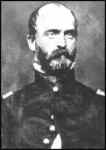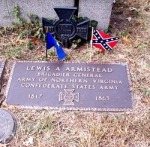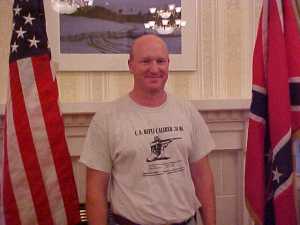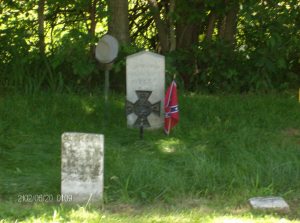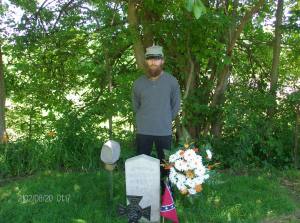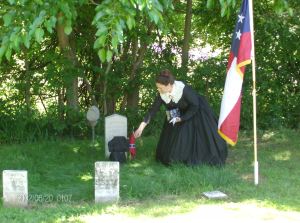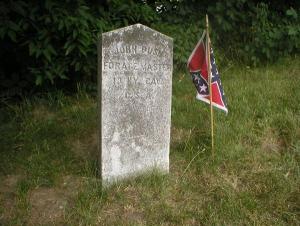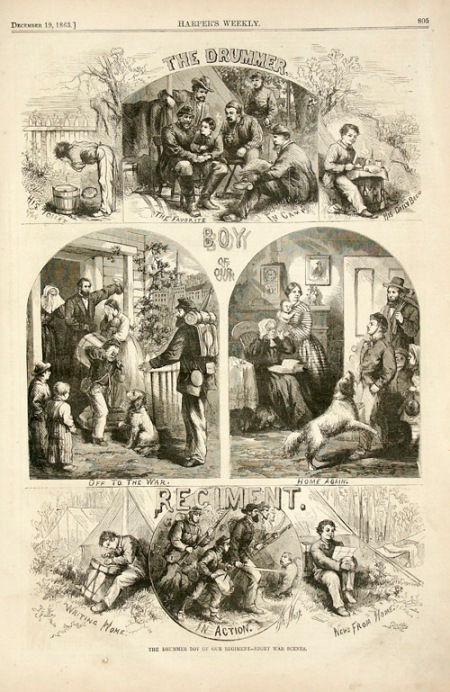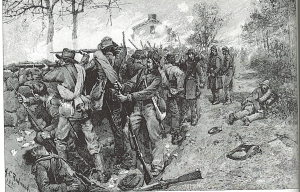
Stonewall and Sunken Road at Marye's Heights

- Confederate dead at the Sunken Road
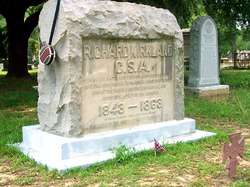
- Kirkland stone
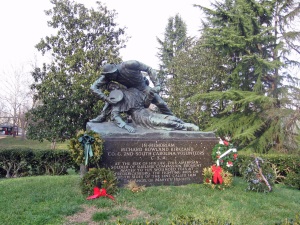
- Kirkland Memorial
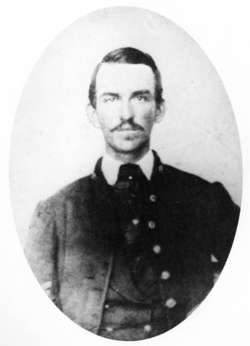
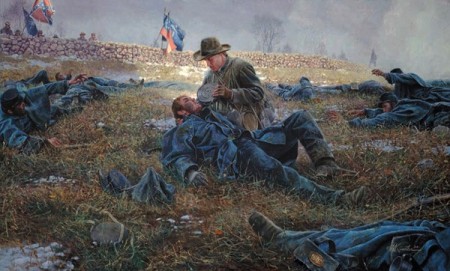
THE ANGEL OF MARYE’S HEIGHTS—A painting by Mort Kuntsler
Sergeant Richard Rowland Kirkland looked out over the field of battle at Fredericksburg, Virginia, and was appalled by what he saw. The day before, he and other Southern troops in General Robert E. Lee’s Army of Northern Virginia had turned back the Federal Army of the Republic in one of the bloodiest battles of the War. Wave after wave of courageous Northern troops had charged up Marye’s Heights at Fredericksburg into the deadly massed fire of Confederate forces entrenched behind a fortified stone wall. The slaughter had been horrendous and left a carpet of blue-uniformed dead and wounded on the frozen slope of Marye’s Heights.
All night, Kirkland and the other Southern defenders had listened to the heart-rending cries of the Federal wounded. Finally, Kirkland could stand it no longer. At daylight on December 14th, the young sergeant in the 2nd Carolina Infantry, requested permission to aid the enemy. His commanding officer was reluctant. Kirkland would likely be shot dead by Federal sharpshooters as soon as he showed himself above the wall. Kirkland was determined however and he was allowed to go—but he could not carry a flag of truce or a weapon. The youth borrowed an armload of canteens from his fellow soldiers, and climbed over the wall onto the field of dead and wounded.
While the other Confederates braced themselves for the rifle shot that would fell Kirkland, the young sergeant calmly walked to the closest wounded Northerner. The opposing Federal troops held fire long enough for Kirkland to kneel down, lift up the wounded man’s head, and give him a drink of water. A loud cheer rolled down the Federal line. Silently, the astounded line of Northern troops watched Kirkland move to another wounded man in blue and give him aid. Both sides held their fire while the courageous sergeant moved from one suffering soldier to another. Going back and forth over the wall for an hour and a half, Kirkland had done all he could do, and he returned safely to the Confederate line behind the wall.
Sergeant Richard Kirkland distinguished himself in battle at Gettysburg, and was promoted to lieutenant. At Chickamauga, he fell on the field of battle, in the hour of victory. As J. William Jones puts it in his book, Christ in the Camps, “He was but a youth when called away, and had never formed those ties from which might have resulted a posterity to enjoy his fame and bless his country; but he has bequeathed to the American youth–yea to the world–an example which dignifies our common humanity.”
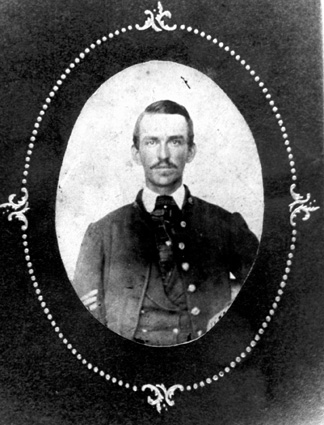
Richard Rowland Kirkland, the Angel of Marye's Heights
